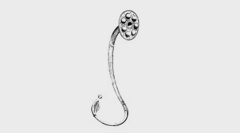Keywords
art, sculpting, likeness, cultural clash
Abstract
Carl Rohl-Smith (1848-1900) received one of his most important commissions in America with the "Iowa Soldiers' and Sailors' Monument" (completed 1897). But his position became difficult as he had to navigate between the different interests of patrons and general public.
"A Danish artist cannot imagine the hardships that being an artist in a foreign land entails. Most of the decisions concerning art are made by the populace." Thus wrote Danish journalist Henrik Cavling (1858-1933) in his travel book Fra Amerika (From America) from 1897.1 He was talking about the Danish-American sculptor Carl Rohl-Smith and the problems he encountered when he worked on the Iowa Soldiers' and Sailors' Monument outside the State Capitol in Des Moines, Iowa. And Cavling continued:
Can you believe that the inhabitants of Iowa decided that Rohl-Smith had to model the muse of History from a famous senator's skinny, flat-chested wife, and that the boy standing next to her should represent Lincoln's grandson, a boy of eight with crooked legs and the head of an onion? Rohl-Smith said No, but the people said Yes - and threatened to fire him. 2
Recommended Citation
Bak, Aase
(2006)
"Between Patrons and Populace: Danish-American Sculptor Carl Rohl-Smith and the Iowa Soldiers' and Sailors' Monument in Des Moines,"
The Bridge: Vol. 29:
No.
2, Article 23.
Available at:
https://scholarsarchive.byu.edu/thebridge/vol29/iss2/23
Included in
European History Commons, European Languages and Societies Commons, Regional Sociology Commons


